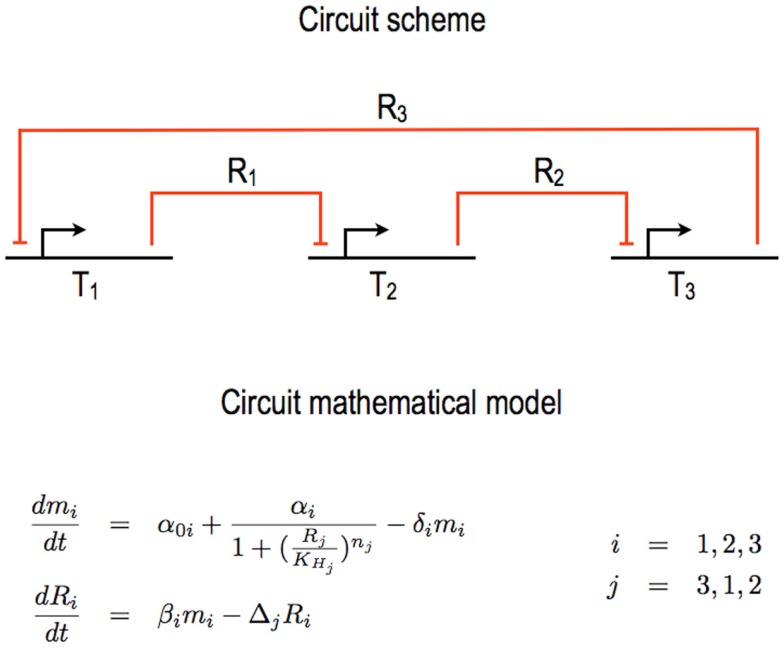Figure 1.
Bacterial repressilator. One of the first synthetic gene circuits realized in E. coli is the so called repressilator (Elowitz and Leibler, 2000). Its core scheme is organized in three transcription units (Ti, i = 1, …, 3) wired together via the exchange of as many different repressor proteins (Ri, i = 1, …, 3). The original circuit design and mathematical model (as re-proposed in this figure) neglect the transcription unit structure in DNA Parts and any specific interactions between, on one hand, RNA polymerases and the DNA and, on the other hand, ribosomes and the mRNA. Furthermore, the action of the repressors on their target promoters is lumped into Hill functions. The overall mathematical model requires six ODEs, two for each unit. Here, α0i represents the leakage rate constants, αi the transcription rate constants, βi the translation rate constants; δi and Δi are the mRNA and protein decay rate constants, respectively; are the Hill constants and nj the Hill (cooperativity) coefficients.

